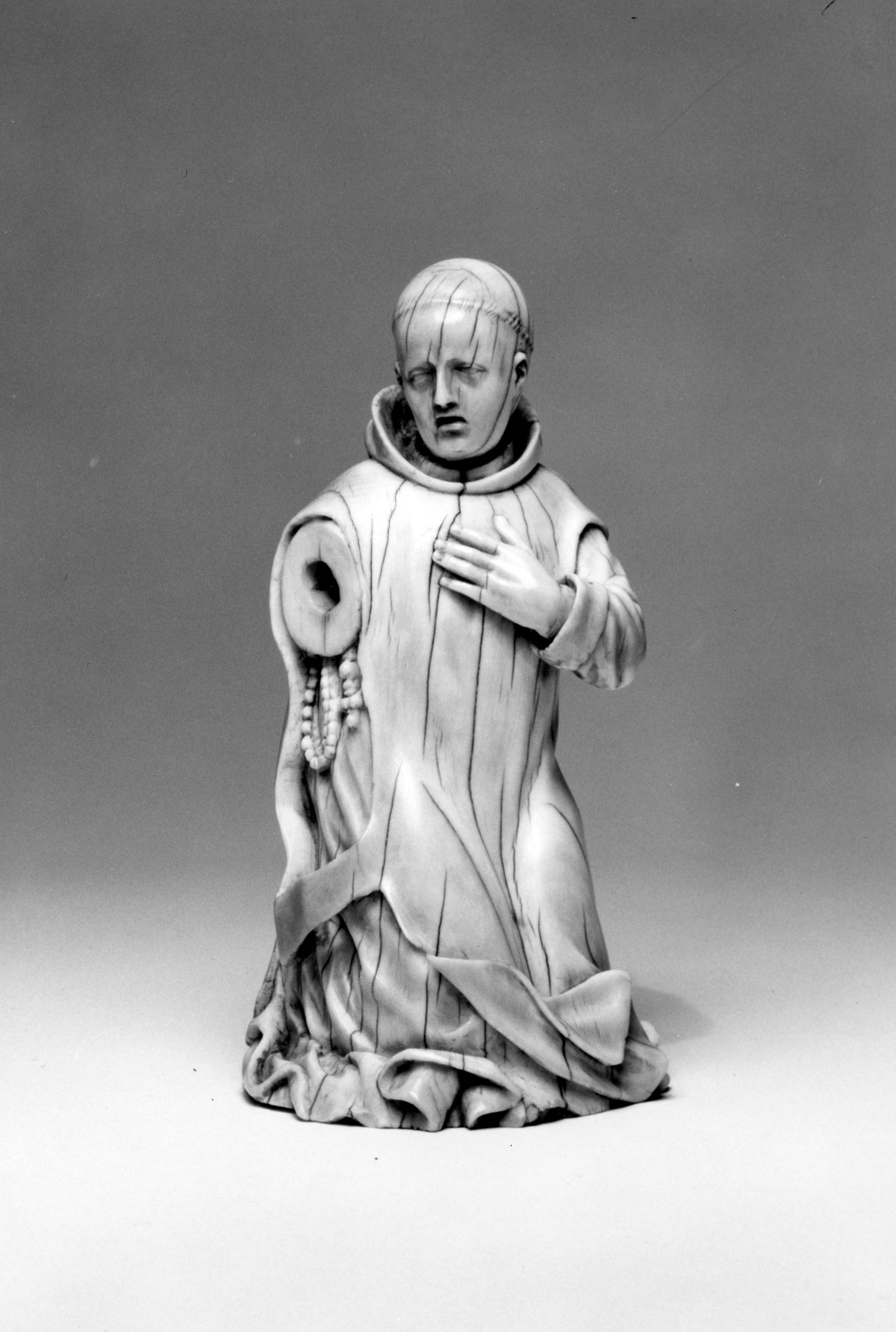Figure of a Carthusian Monk, Possibly Saint Bruno
This tonsured monk is represented kneeling. His cowl is thrown back, and his left arm is raised to cover his heart. A rosary and a crucifix hang at his side. The figure wears the distinctive habit of the Carthusians and may represent Saint Bruno, the founder of that strict order. Italian representations of this saint, who was canonized only in 1623, are fairly rare. The south Italian origin may relate to the fact that when Bruno left the service of Pope Urban II in 1090, he established his second charterhouse at La Torre, in Calabria, where he died. Ivory is an especially appropriate medium for representing the white robes of the Carthusians.
The saint's right arm, which was a separate piece, is missing.
Provenance
Provenance (from the French provenir, 'to come from/forth') is the chronology of the ownership, custody, or location of a historical object. Learn more about provenance at the Walters.
William T. / Henry Walters Collection, Baltimore, by purchase; Walters Art Museum, 1931, by bequest.
Geographies
Italy, Naples (Place of Origin)
Measurements
H: 4 in. (10.1 cm)
Credit Line
Acquired by William T. or Henry Walters
Location in Museum
Not on view
Accession Number
In libraries, galleries, museums, and archives, an accession number is a unique identifier assigned to each object in the collection.
In libraries, galleries, museums, and archives, an accession number is a unique identifier assigned to each object in the collection.
71.359


